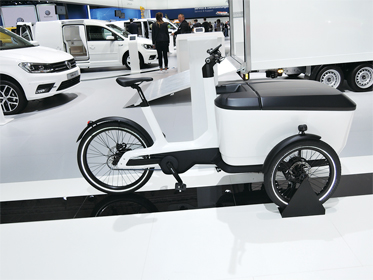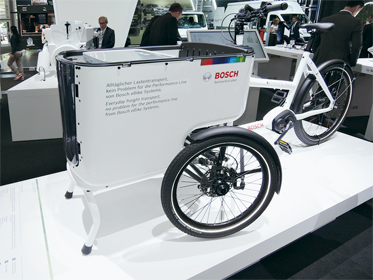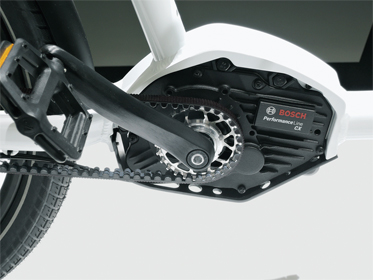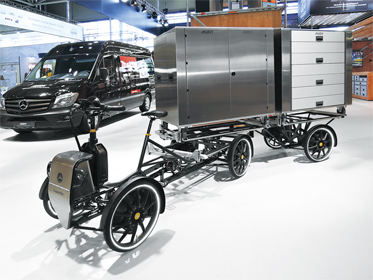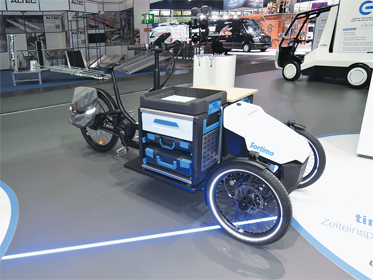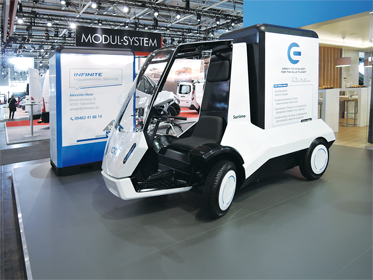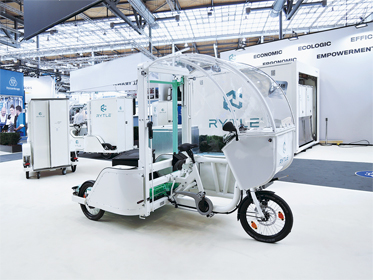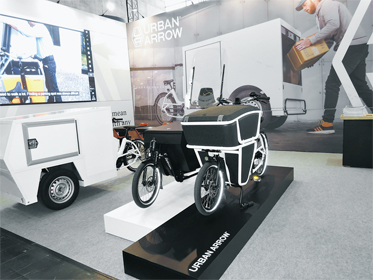
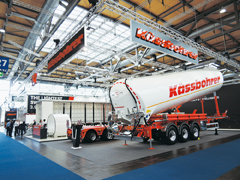
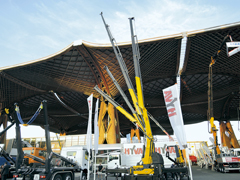
IAA CV 2018 was held under the theme of 'Driving tomorrow', which included electromobility, self-driving, digitization, and urban logistics. The show attracted a total of 2,174 exhibitors from 48 countries, and hosted 435 world premieres. The number of visitors exceeded 250,000. Although there are still many issues regarding electromobility for heavy vehicles, in the area of commercial vehicles it's approaching the full-scale launching stage. At the booths of the major suppliers, there were many exhibits focusing on power trains, which have evolved in response to environmental regulations. They featured self-driving using an assist system and autonomous running, networking, reducing the burden on delivery service drivers, and 48V mild hybrids.
 Name: IAA CV Hannover International Motor Show
Name: IAA CV Hannover International Motor ShowAll-electric buses run in major European cities
Daimler, which was one of the pioneers in introducing a fully-electric bus, the 'eCitaro', is expanding its predominance in the field of e-mobility for heavy vehicles, as demonstrated by the introduction of its 'e-Actros' truck. Moreover, Mitsubishi Fuso Truck and Bus Corporation (MFTBC), a Daimler group company, announced its 'E-FUSO Vision One'. MAN, a subsidiary of automaker Volkswagen AG, showcased its 'Lion's City E' all-electric bus, which employs a new system with one centrally mounted motor to drive multiple axles.
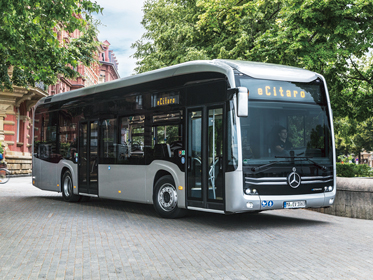
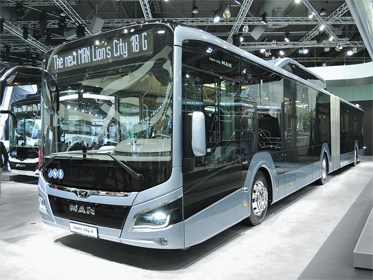
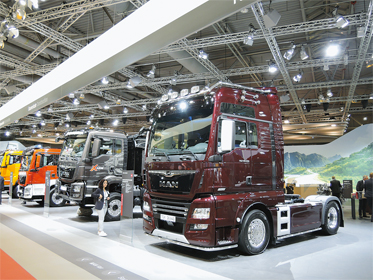
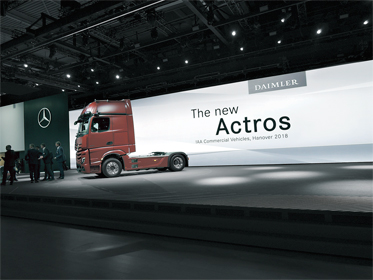
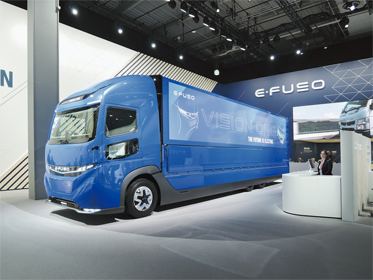
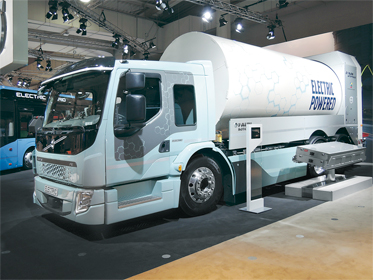
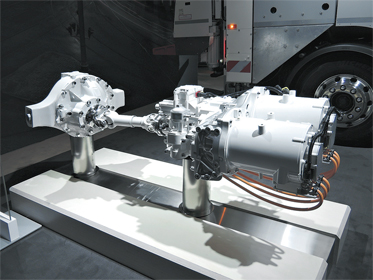
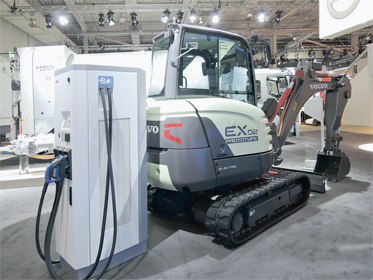
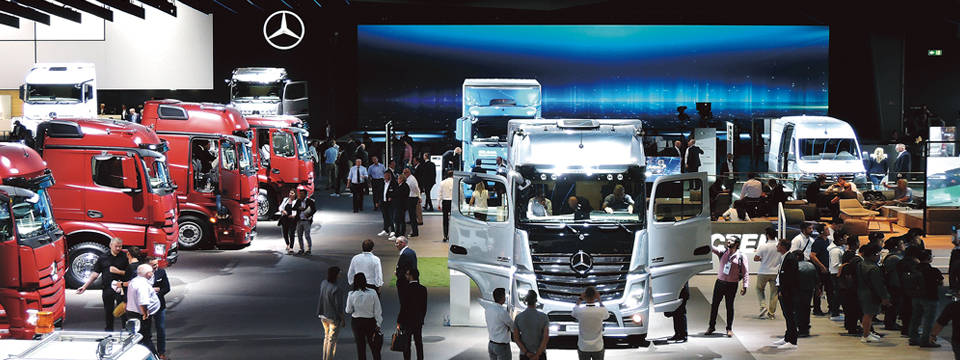
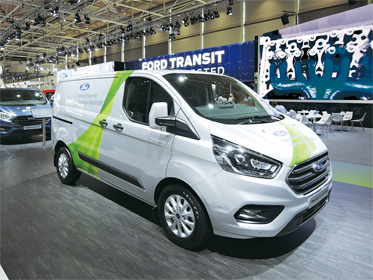
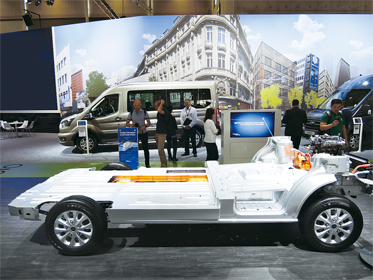
In the field of small trucks and vans, Ford was the world pioneer in introducing plug-in hybrid electric vehicles (PHEV). The Ford 'Transit Custom PHEV', equipped with a 1.0-liter EcoBoost petrol engine as a range extender, can drive 50 kilometers on full electric. In Europe, small diesel engine vehicles are enjoying an enduring popularity.
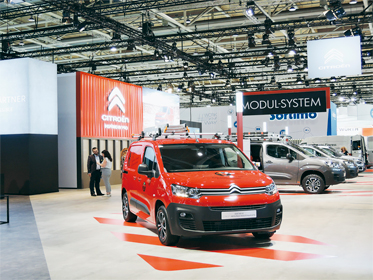
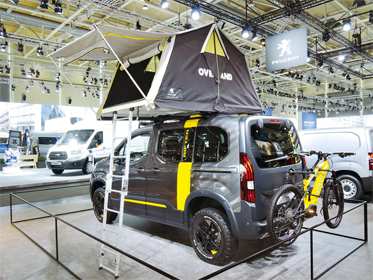
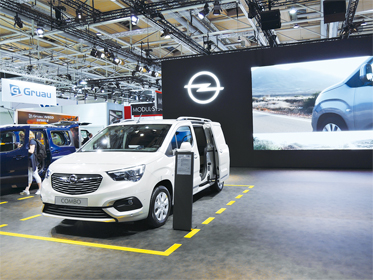
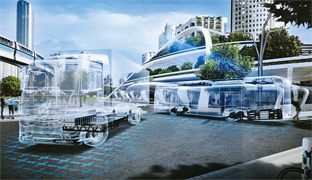
Can electric motors surpass large diesel engines?
The 'eActros' displayed at the Mercedes-Benz booth is truly a monster equipped with the total of 11 batteries inside and below the chassis with a usable total capacity of 240kWh. The drivetrain consists of two electric motors installed near the wheel hubs with a maximum output of 2 x 126kW, giving the vehicle a range of about 200 kilometers.
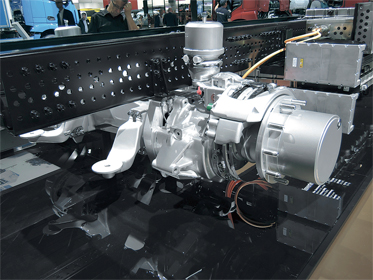
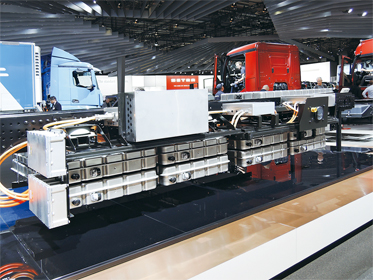
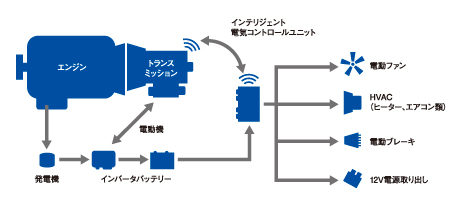
"48V Mild Hybrids" have a simple structure in which parts such as a 48V lithium ion battery, an AC/DC inverter and an ISG (Integrated Starter Generator) are added to a conventional engine system. As a result, compared with a strong hybrid, a large cost reduction is possible, and it's said that the improvement in fuel efficiency increases as the vehicle gets larger.
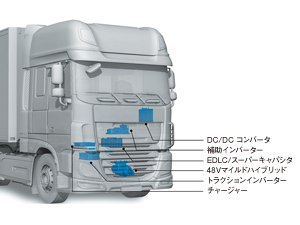
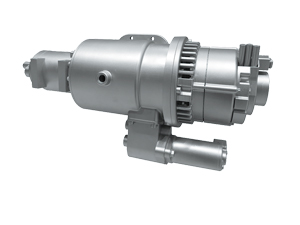
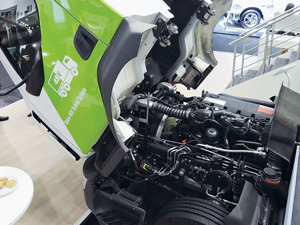
Debut of an electric concept vehicle enabling autonomous running on demand
Mercedes-Benz showcased its Vision URBANETIC, a new mobility concept model based on an electrically-powered autonomous driving platform, with an upper body that can be switched between passenger use and cargo use. The passenger module can be used for car-sharing purposes, accommodating up to 12 passengers, and the cargo module can carry up to 10 EPAL pallets.
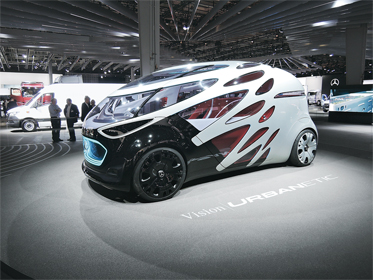
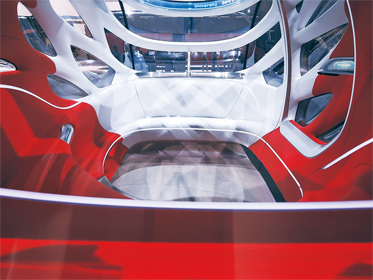
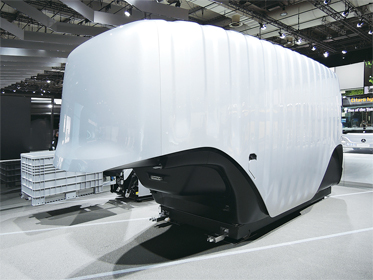
The Renault EZ-PRO represents Renault's last mile urban delivery vision. It consists of two parts: a Leader Pod which leads by driving and a Robo Pod which follows and is totally unmanned. Connecting follower Pods like a convoy can contribute to more efficient delivery.
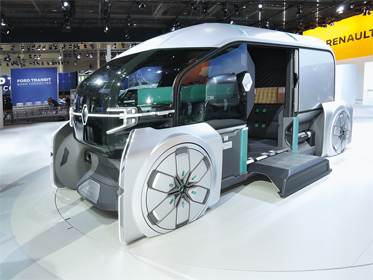
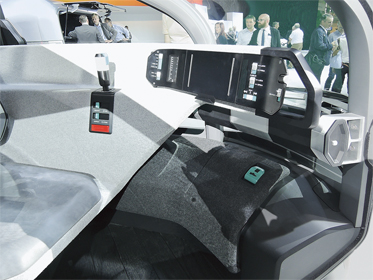
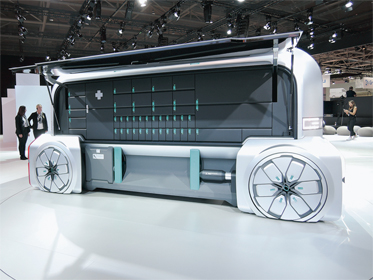
The Volkswagen I. D. Buzz Cargo concept van has been introduced as a commercial version of the I.D. BUZZ electric microbus. A digitalized Cargo Van Concept is installed with Sortimo storage cases and a tablet in the back. The van is equipped with autonomous driving capability and a chasing system which indicates delivery destinations on the tablet when the back doors are opened.
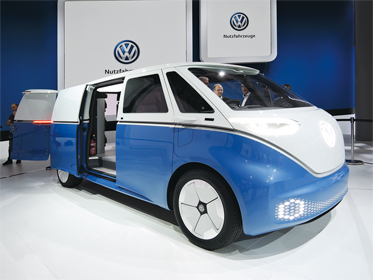
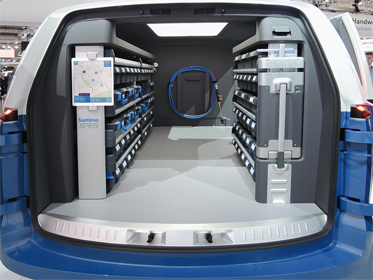
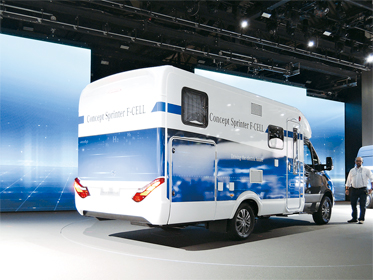
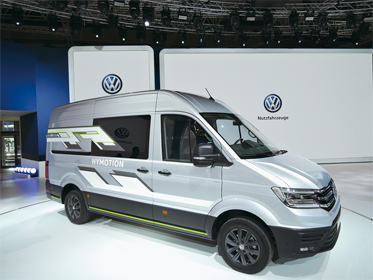
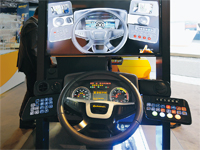
Advanced technology supporting the creation of future commercial vehicles
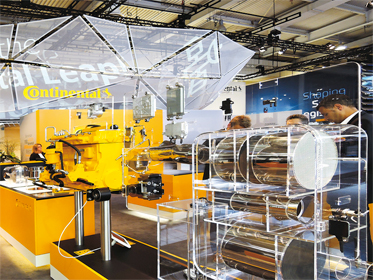
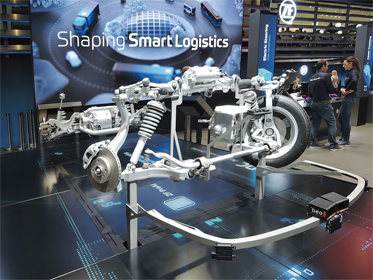
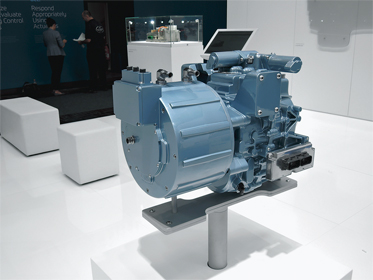
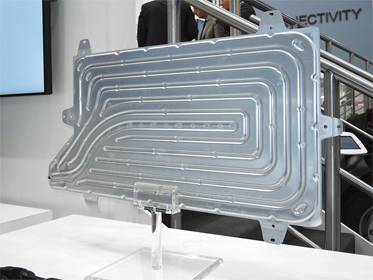
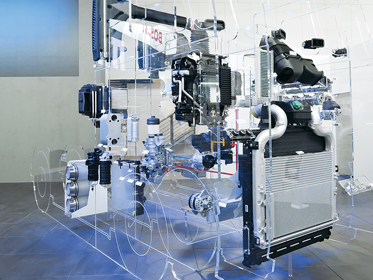
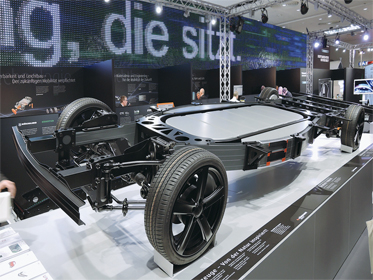
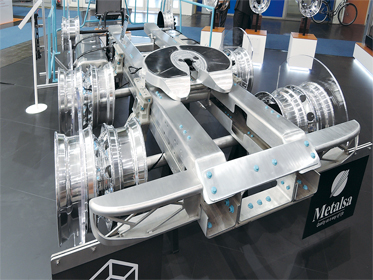
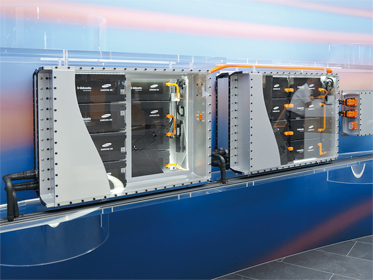
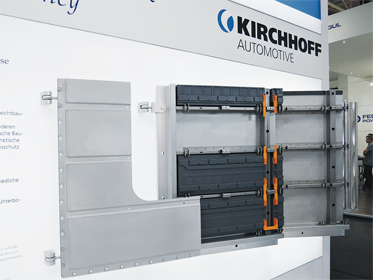
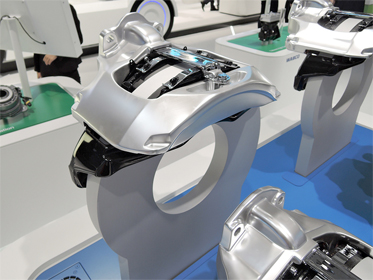
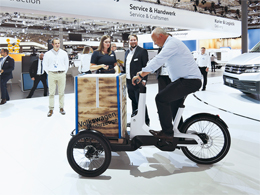
Cargo bikes play an important role in 'last mile transportation'.
48V e-Bikes have realized a drastic evolution.
Automation and power-saving are challenging elements in 'last mile transportation', in which drivers deliver products to end users. At IAA CV2018, however, a great number of 48V cargo bikes with power-assisted functions were showcased as solutions.
